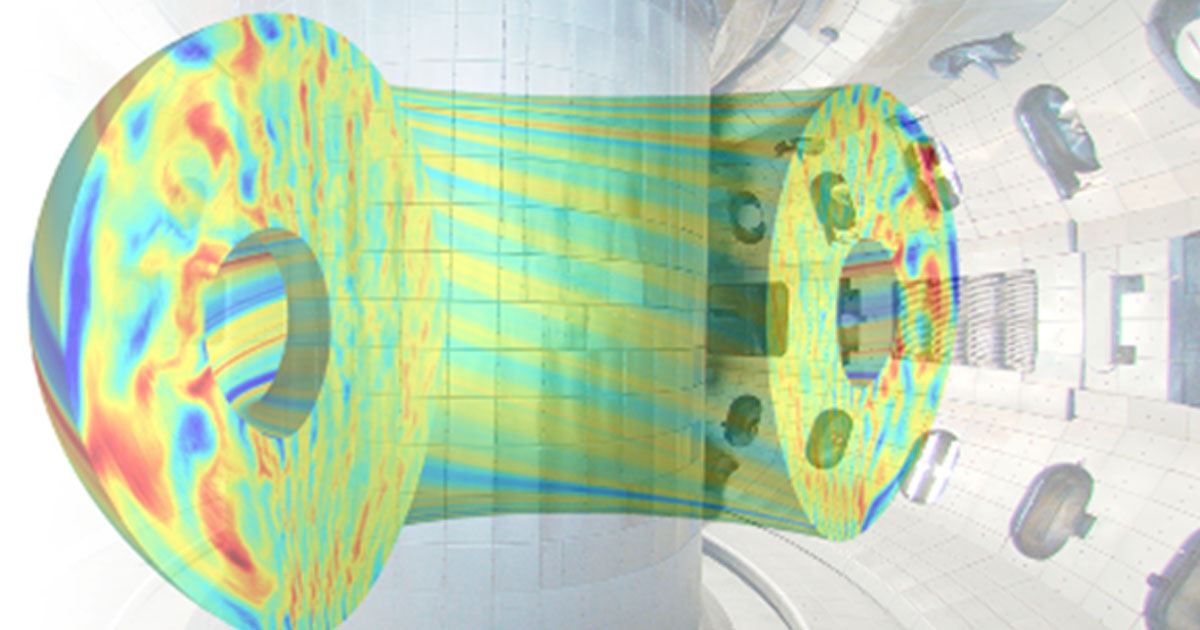
General Atomics Scientists Use DOE Supercomputers to Advance Fusion Energy
Simulations on Frontier and Summit will help optimize fusion reactor performance
San Diego – 05 Jan 2023 – Scientists at General Atomics (GA), the Oak Ridge National Laboratory (ORNL), and the San Diego Supercomputer Center at UC San Diego (UC San Diego) have been awarded highly sought-after computing time on two of the most powerful supercomputers in the world as part of the Department of Energy’s (DOE’s) Office of Science Innovative and Novel Computational Impact on Theory and Experiment (INCITE) program.
The award, announced in November, will allow the team to perform simulations to predict energy losses in fusion plasmas and help optimize plasma performance for the next generation of fusion energy reactors. GA scientist Emily Belli will lead the project, along with GA Theory and Computational Science Director Jeff Candy and scientist Gary Stabler; UC San Diego software developer Igor Sfiligoi; and ORNL computational scientist Reuben Budiardja.
“To achieve practical and economic fusion energy, we need to fully understand how burning plasmas will behave during operation in a fusion reactor,” said Belli. “Simulations such as these are extremely computationally intensive, which is why this award is so important. The support from DOE will help us close important gaps in fusion plasma theory.”
This year’s INCITE awards are notable for including the first allocations on Frontier, the Oak Ridge Leadership Computing Facility’s (OLCF’s) flagship HPE Cray EX system, which debuted in May as the world’s fastest supercomputer with 1.1 exaflops of performance and a theoretical peak performance of 2 exaflops. FLOPS (floating-point operations per second) are a measure of computer processing speed, and an exascale facility like Frontier operates at a speed roughly 10 million times faster than a typical desktop computer.
Approximately half the computing time awarded to the team is on Frontier, with the remainder on OLCF’s Summit supercomputer, currently the world’s third-fastest system.
The GA-led project will explore a key concern for fusion energy. In a fusion reactor, effective and stable confinement of thermal energy in a plasma is necessary for “burning” (i.e., self-sustaining) fusion. Plasma confinement, however, is limited by particle and energy losses due to turbulence, which is driven by instabilities that can limit performance. Understanding the underlying mechanisms that drive turbulence in burning plasmas is essential in designing the first generation of fusion power plants like GA’s Fusion Pilot Plant.
The team’s simulations will use GA’s CGYRO code, which was developed specifically for fusion simulations. The CGYRO algorithm is highly optimized for scalability on systems like Frontier and Summit that use cutting-edge GPU-based architectures.
Open to any researcher or research organization in the world with a computationally intensive project, INCITE’s application process is highly competitive. INCITE proposals are assessed by peer-review panels composed of international experts, with each panel representing a different scientific discipline. The proposals are also evaluated on a technical level by each computing facility for computational readiness and the scalability of the project’s code and its algorithms.
About General Atomics: Since the dawn of the atomic age, General Atomics innovations have advanced the state of the art across the full spectrum of science and technology – from nuclear energy and defense to medicine and high-performance computing. Behind a talented global team of scientists, engineers, and professionals, GA’s unique experience and capabilities continue to deliver safe, sustainable, economical, and innovative solutions to meet growing global demands.
For more information contact:
Evan Polisar
Strategic Communications Manager
858-455-3474
Evan.Polisar@ga.com